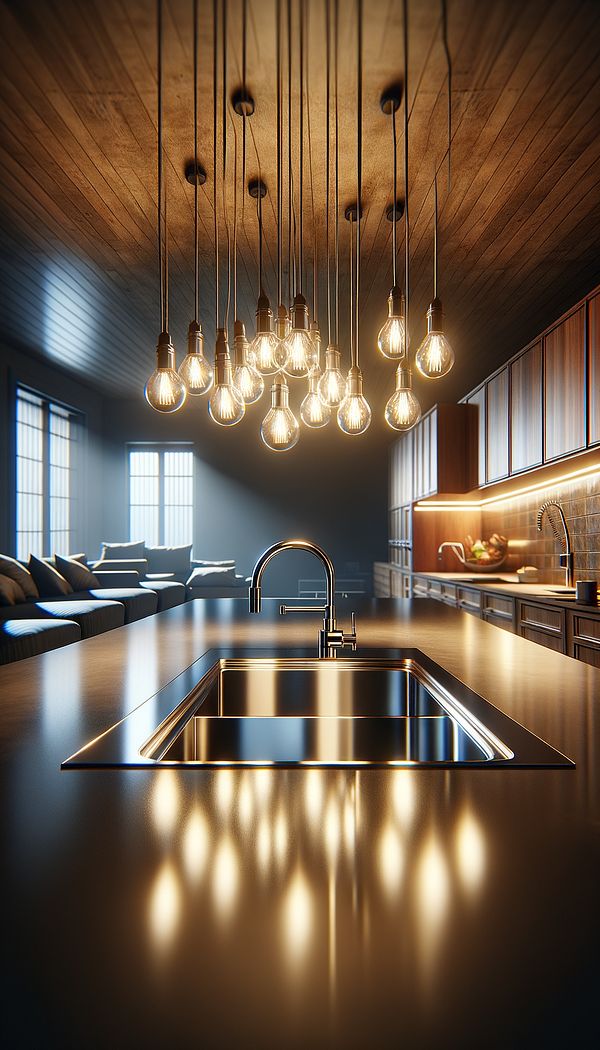What is Fixture?
In interior design, fixtures refer to items that are attached to the property in a way that makes them a permanent part of the space.
Description
In the realm of interior design, the term 'fixture' plays a critical role, connecting form with function. Fixtures are essentially items that are attached or fixed in a position, becoming an integral part of the property upon which they are installed. This can include a wide range of items from lighting fixtures, sinks, and toilets to built in cabinets and ceiling fans. The defining trait of a fixture is its permanence; once installed, it is not meant to be moved or replaced frequently.
The selection and design of fixtures can significantly influence the aesthetics, usability, and comfort of a space. For instance, the type and placement of lighting fixtures can affect the ambiance and mood, while a well-designed kitchen faucet can combine aesthetic appeal with practicality. Fixtures must be chosen not only for their design but also for their durability, quality, and how well they fit with the room's overall decorating principles and elements.
Moreover, fixtures can bridge the gap between the building's architectural elements and its interior design theme. They can either stand out as statement pieces or blend seamlessly with the design, depending on the desired effect. Therefore, understanding fixtures in the context of interior design is paramount for creating cohesive and functional spaces.
Usage
In a newly renovated kitchen, stainless steel appliances and a farmhouse sink are considered fixtures because they are permanently installed and contribute to both the functionality and design of the space. In a living room, built in bookshelves and recessed lighting are fixtures that enhance the room's usability while also serving as elements of its design.
FAQs
-
Are curtains considered a fixture in interior design?
No, curtains are typically classified as window treatments, not fixtures, because they are not permanently attached to the property and can be easily removed or replaced.
-
Can fixtures be replaced or updated?
Yes, fixtures can be replaced or updated, although they are meant to be permanent parts of a space. Updating fixtures is a common way to modernize a room without extensive renovations.
-
Do fixtures vary by design style?
Absolutely, fixtures vary widely by design styles. The choice of fixtures can significantly influence or complement the overall design style of a space, be it minimalist, industrial, traditional, or contemporary.
Practical Application
When selecting fixtures for a space, consider both the aesthetic and functional aspects. Ensure that they complement the room's overall design style while also being durable and of high quality. Remember, fixtures can significantly impact the look, feel, and usability of a space, so choose wisely.
-
Architectural Elements199 articles
-
Design Styles478 articles
-
Lighting Fixtures & Hardware17 articles
-
Decorating Principles & Elements330 articles
-
Kitchen & Bath37 articles
-
Foam CoreFoam core is a lightweight material made of a foam center sandwiched between two layers of paper.
-
EclecticEclectic refers to a design style that combines elements from various time periods, cultures, or design philosophies.
-
Colour TemperatureColour temperature is a characteristic of visible light that has important applications in lighting, photography, videography, publishing, manufacturing, astrophysics, horticulture, and art.
-
Barrel ChairA barrel chair is a type of armchair that features a semi-circular back that resembles the shape of a barrel.
-
TiebackA tieback is a decorative accessory used to hold back curtains or drapes.
